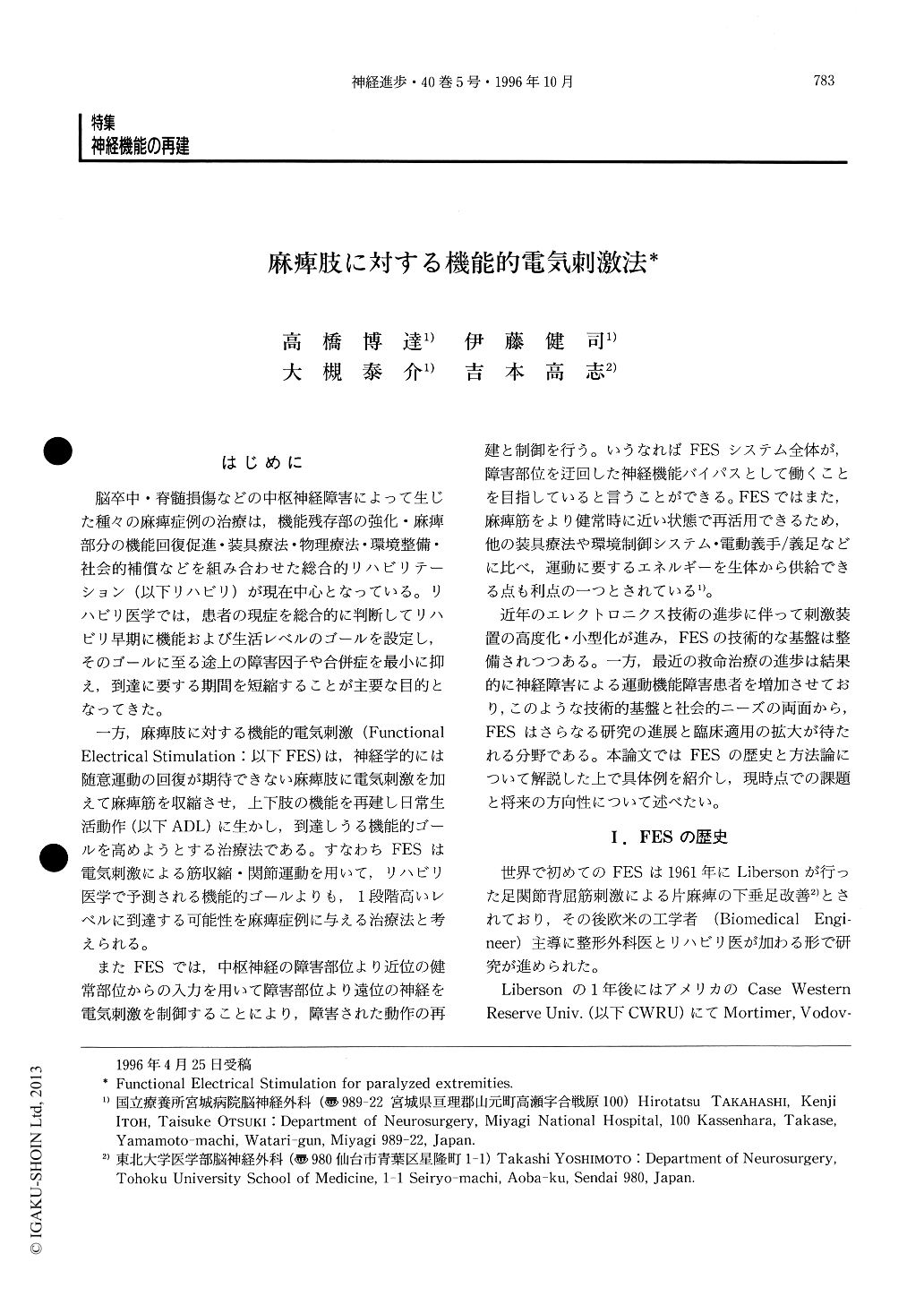Japanese
English
- 有料閲覧
- Abstract 文献概要
- 1ページ目 Look Inside
はじめに
脳卒中・脊髄損傷などの中枢神経障害によって生じた種々の麻痺症例の治療は,機能残存部の強化・麻痺部分の機能回復促進・装具療法・物理療法・環境整備・社会的補償などを組み合わせた総合的リハビリテーション(以下リハビリ)が現在中心となっている。リハビリ医学では,患者の現症を総合的に判断してリハビリ早期に機能および生活レベルのゴールを設定し,そのゴールに至る途上の障害因子や合併症を最小に抑え,到達に要する期間を短縮することが主要な目的となってきた。
一方,麻痺肢に対する機能的電気刺激(Functional Electrical Stimulation:以下FES)は,神経学的には随意運動の回復が期待できない麻痺肢に電気刺激を加えて麻痺筋を収縮させ,上下肢の機能を再建し日常生活動作(以下ADL)に生かし,到達しうる機能的ゴールを高めようとする治療法である。すなわちFESは電気刺激による筋収縮・関節運動を用いて,リハビリ医学で予測される機能的ゴールよりも,1段階高いレベルに到達する可能性を麻痺症例に与える治療法と考えられる。
FES has provided the restoration of upper and lower extremity function for the hemiplegics, paraplegics and quadriplegics. This paper reviewed the history, methodology, clinical applications and future prospects of FES.
The first clinical application of FES was reported by Liberson in 1961 used for the restoration of ankle dorsiflexion for hemiplegics. FES had been developed by a few groups in USA and Yugoslavia in 1970s and had spread to many other groups in European countries, USA, Canada, Israel and Japan in 1980s.

Copyright © 1996, Igaku-Shoin Ltd. All rights reserved.


